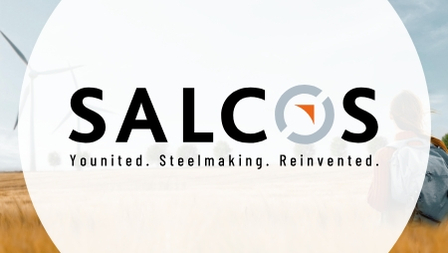Pretex®focar®
04.07.2018 | Salzgitter Flachstahl GmbH
Fulfilling the highest requirements for paintwork in the automotive sector thanks to an enhanced Pretex® structure.

The paintwork's look and feel shape the first impression given by a vehicle and are therefore significant quality characteristics for today's automobiles. The requirements placed on a car's finish have continually grown in recent years. The elimination of the primer coat has further increased the requirements on the paint and the sheet metal onto which it is applied. Saving on the primer coat also reduces processing and process costs at the customer and furthermore saves a further intermediate coat in the sense of sustainability.
In the past, the topography of the sheet surface was described by the average roughness Ra and the roughness peak count RPc. These values also determine the process reliability during processing in the customer's pressing plant. For improved paintwork, the specification for the roughness average was lowered and the minimum peak count raised. This presents two contrary requirements that are not quite sufficient alone.
The waviness of the sheet metal surface in accordance with SEP1941 is a new, additional characteristic that must be limited for paintwork with a good look and feel (Fig. 1). Salzgitter Flachstahl has enhanced the established Pretex® structure and, with the new Pretex®focar® structure it can fulfill the increased customer requirements for the waviness characteristic Wsa1-5 for cold-rolled sheet with various surface coatings.
| Parameters | Pretex® | Pretex®focar® |
| Average roughness (Ra) | 1.1 - 1.6 µm | 0.9 - 1.4 µm |
| Peak count (RPc) | > 60 /cm | > 75 /cm |
| Waviness (Wsa1-5) | - | < 0.35 µm |

Pretex®focar® is offered for uncoated sheet, electrogalvanized sheet, and hot dip coated sheet, which is skin passed after being coated. Fig. 1 shows the improved paintwork appearance thanks to the Pretex®focar® structure as compared to the established Pretex® structure.
Salzgitter Flachstahl and Salzgitter Mannesmann Forschung worked closely together to develop Pretex®focar® and put it into operational use. The work started with a determination of the characteristics for a precise description of the topographies of the skin pass rollers used to imprint the texture into the sheet surface. Extensive examinations were conducted on Pretex-coated rollers and selected steel sheets. By way of example, Fig. 2 uses a false color image to show the results of extensive roughness measurements made on a Pretex®focar® sheet. In order to take into account the influence of the forming process that takes place at the customer and to achieve the quality objectives for the final product, the waviness of unformed sheets was also examined. The analysis of these data made it possible to determine the parameters for the optimized coating for the skin pass rollers and their use. Salzgitter Flachstahl customers are meanwhile successfully using this structure for body shell elements on a large scale.
The Pretex®focar® product developed in this way notably fulfills our customers' higher quality demands with respect to the surface waviness and is available for typical body shell grades and various finishes.
If you have any questions, your contact from Sales and the Technical Customer Services would be happy to help.







